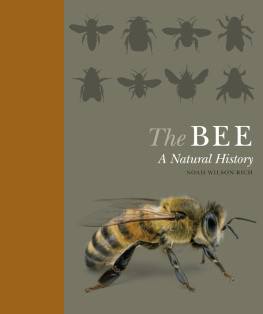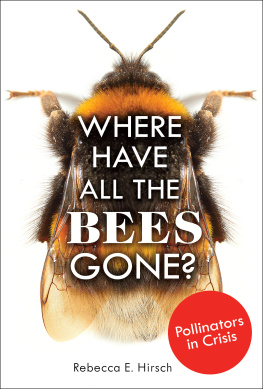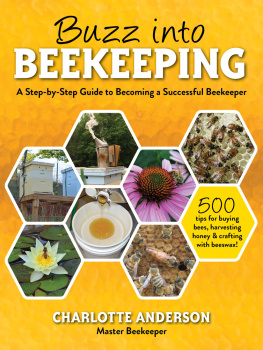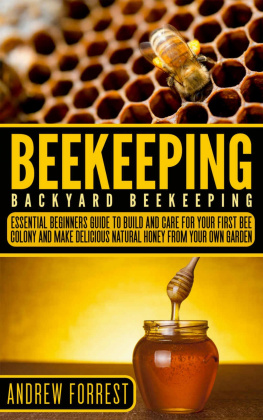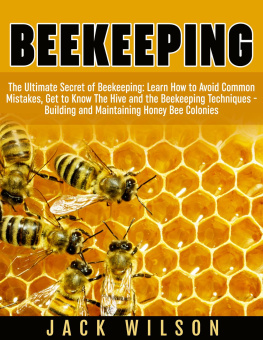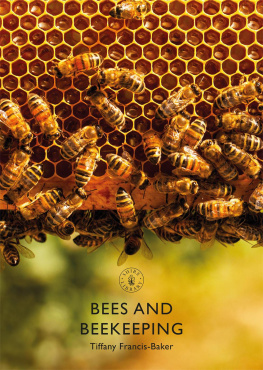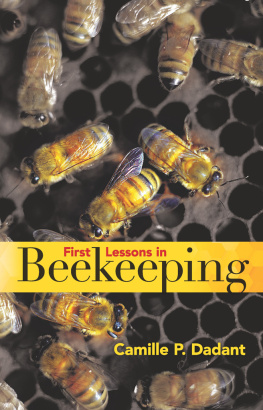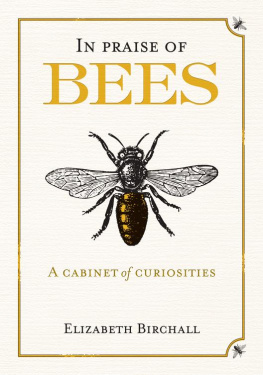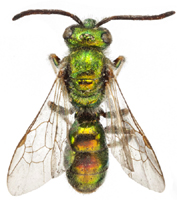
The BEE
A Natural History
DR NOAH WILSON-RICH WITH KELLY ALLIN, NORMAN CARRECK & DR ANDREA QUIGLEY

A natural history of the behaviour & qualities of the bee
The Bee is a comprehensive exploration of these fascinating creatures. These workaholics have eyes with more than 6,000 separate lenses, bodies so hairy that they use static charges to attract pollen and the capacity to communicate by dancing; bees are endlessly engrossing.
THE BEE:
Provides an accessible, illustrated look at the human-bee relationship over time
Details bee evolution, ecology, genetics and physiology and includes a directory of notable bee species
Features a section on beekeeping and handy go-to guides for the identification, prevention and treatment of diseases
Presents a holistic approach to bee health, including organic and integrated pest management techniques
Contents 
Introducing the Bee 
B efore flowering plants evolved, there were no bees. And then, about 100 million years ago, plants began to develop colorful appearances and sweetly scented reproductive organswhile at the same time some wasps abandoned their carnivorous hunting lifestyle and took to a gentler way of life. Bees evolved from these wasp ancestors, feeding on pollen provided by the plants for protein in exchange for their services as pollinators.
Bees are remarkable for their co-evolution with flowers, displaying an astonishing range of adaptationsand they are no less remarkable for their social lives. Some bees are solitary, but honey bees live in large, well-organized family groups, and exhibit complex social behaviors seen nowhere else in the animal kingdom. Besides which, honey bees also make several products that are of direct benefit to usthe honey, the wax, and the resins that humans have valued for millennia.
Today, bees are found across the world, and the twenty thousand or so species display an amazing variety of behaviors. Some species live underground, others high in trees, and some even build their nests within the walls of our homes. And of course humans have taken to beekeeping on a massive scale. Bees are now so intertwined with humanity that our interest in them is no longer a simple fascination, but a vital necessity. Quite simply, apart from the honey and other products they supply, we need bees to pollinate the majority of fruit and vegetable crops that we rely upon for our own food.
The challenges faced by bees todayfrom habitat loss to pesticides and deadly diseasesthreaten not only the bees themselves but potentially all of human life.
Bees and other animals cross-pollinate over 90 percent of the worlds wild plants.


THE HARD-WORKING HONEY BEE
There are about twenty thousand bee species in the world and they can be split into four broad groups: solitary, bumble, stingless, and honey bees. While all these groups are covered in this book, the honey bee (Apis mellifera) is the most studied and the most familiar.
The honey bee originated in Eurasia and Africa, but is now found on every continent except Antarctica. Honey bees have lived in close association with humans for thousands of years, ever since the Ancient Egyptians established the art of beekeeping. But how many of us, as we pick a jar of honey off the supermarket shelf, pause to consider the lives of the bees that made it?
In a brood cell deep inside the nest, an egg hatches, and the larva, fed first on royal jelly and then on bee bread, grows throughout its first week before developing into a pupa. At this point it is sealed into its cell by the adult workers, and about three weeks after the egg was laid a new worker bee emerges.
The behavior of the adult worker progresses with age. Her first duty is inside the nest, cleaning and nursing the brood, before she moves on to guarding the entrance, and eventually to foraging for pollen and nectar. Foraging takes a severe toll on the worker bees body, clearly visible in the shredding of her wings. In the summer, a worker honey bee lives only about a month as an adult, but in the inactive winter season she might live for three to six months.
The drones and the queen do not experience such grueling wear and tear, so they have longer lives. Drones can live for three months, or until they finally mate. Honey bee queens are remarkably long-lived. They may survive several years, taking periodic rests during the winter or the rainy season, and then restarting egg laying to produce more workers when flowers come back into bloom.

ABOUT THIS BOOK
This book is for anyone interested in bees, the flowers they pollinate, and the products they create. The first three chapters summarize our scientific understanding of bee evolution, biology, and behavior. We then build on that knowledge to consider how humans have interacted with bees over the course of several millennia, and provide some details of the pursuit of beekeeping, before moving on to an overview of forty of the worlds most remarkable bee species. In the final chapter we consider the challenges faced by bees in the modern world, and what we can do to help them. We need bees, and increasingly they need us.
10 FACTS ABOUT BEES
1. Only female bees sting, and many solitary bees cant sting.
2. A bees sting (or stinger) is a modified egg-laying organ.
3. A bee has five eyes: two are complex eyes that see movement well, while the other three detect light intensity.
4. Bees can see ultraviolet light, but they cannot see the red end of the spectrum, so they perceive the world as more blue and purple than we do.
5. Drones do not have a father, but they do have a grandfather.
6. Bees are herbivores, and their diet comes entirely from flowerscarbohydrates from nectar and protein from pollen.
7. Honey bees are not native to the Americas, and bumble bees are not native to Australia.
8. A queen bee has exactly the same genes as a worker: she develops into a queen simply because she is fed extra rations of royal jelly when she is a larva.
9. The honey bee genome has been sequenced; it is about one-tenth the size of the human one.
10. Bees pollinate over 130 fruit and vegetable crops, and produce many other things that benefit humanshoney, wax, resins, propolis, royal jelly, and even venom.
KEY BEE TERMS
Apiary A place where beehives are kept.
Brood A collective term for the three stages of developing bees (eggs, larvae, and pupae).
Drone A male bee.
Hive The structure (natural or man-made) within which the nest is located.
Larva The developmental stage that hatches from an egg.
Nest A foundation for rearing brood.
Pupa The developmental stage that follows a larva, the period during which metamorphosis into an adult bee occurs.
Pollination Process by which plants undergo fertilization, via pollen transferred from one flower to another of the same species.
Next page
